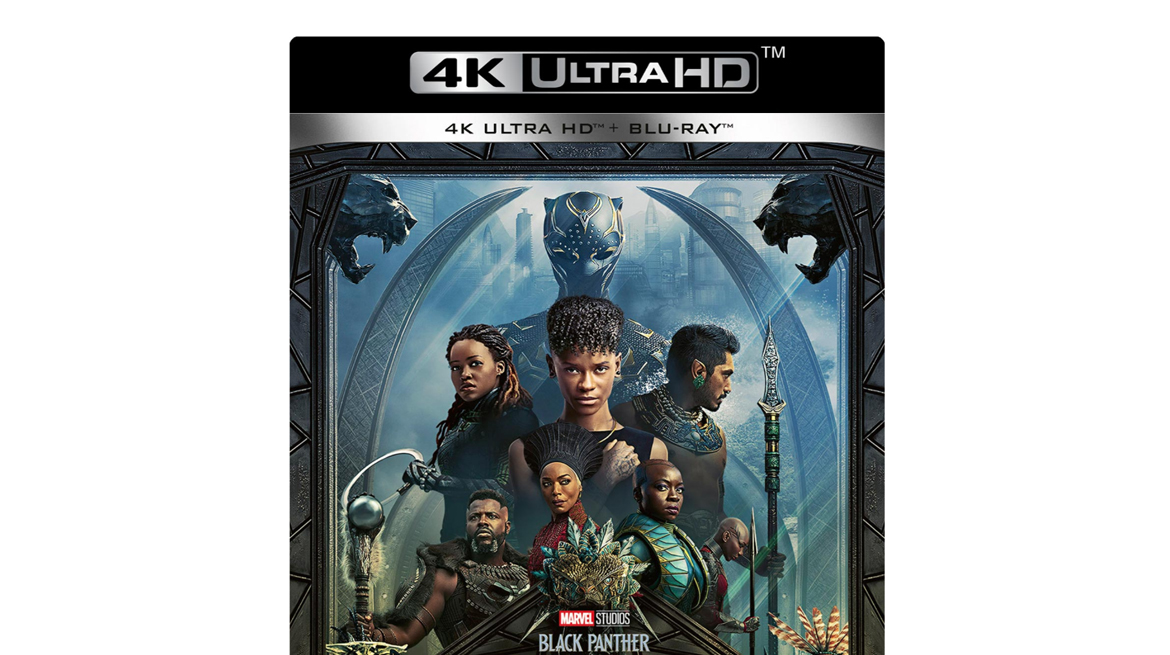TL;DR
Wakanda mourns T'Challa's death, facing threats from Namor and his underwater kingdom. A young inventor's technology sparks conflict, forcing Shuri and Okoye to seek peace. The film grapples with T'Challa's absence, impacting its narrative and tone, with a script that feels like it retained elements from an earlier version. While Angela Bassett and Danai Gurira shine, the 161-minute runtime drags, and special effects are underwhelming. However, the UHD edition boasts stunning visuals and immersive sound. Discover if the technical brilliance can salvage a flawed script.
Wakanda is in mourning. T’Challa (Black Panther) has succumbed to an unexplained illness and passed away. The nation is now without its protector, and the world’s attention is focused on its Vibranium resources. Queen Ramonda (Angela Bassett) strives to maintain stability, but the emergence of Riri (Dominique Thorne), a high school student who has constructed a Vibranium detector, complicates matters. When the detector falls into nefarious hands, it provokes the wrath of the underwater ruler Namor (Tenoch Huerta). He targets Wakanda and its people, believing them responsible for the disruption. Shuri (Letitia Wright) and Okoye (Danai Gurira) journey to the United States, seeking a means of mediating between Wakanda and Namor’s kingdom, a task that proves more challenging than initially anticipated.
Black Panther: Wakanda Forever’s narrative cohesion is arguably impacted by the untimely death of actor Chadwick Boseman (Black Panther) at the age of 43. His absence profoundly shapes the film, altering its overall structure. Director and screenwriter Ryan Coogler opted not to recast the role of T’Challa, allowing Black Panther to live on through another actor. While understandable, this decision inevitably dates the film and potentially neglects the desires of fans deeply invested in the character.
Consider a child born around 2018 who develops a strong affinity for Black Panther. By 2029, at the age of eleven, they embark on a journey to watch all 568 Marvel movies in chronological order. Upon reaching Captain America: Civil War, they are introduced to Black Panther, who quickly becomes their favorite character – the one they most identify with within the entire MCU. They experience profound sadness upon Black Panther’s death in Avengers: Infinity War and unparalleled joy when he is resurrected in Avengers: End Game. They have watched Black Panther (2018) countless times. After enduring seven films without Black Panther, they finally arrive at his second solo movie. It is now 2029, almost a decade since Chadwick Boseman’s passing. This child is less concerned with the actors portraying the roles and more invested in the story and characters. They eagerly begin the film, anticipating the continuation of Black Panther’s adventures.
However, Black Panther’s off-screen death occurs within the film’s opening minutes, lacking explanation or narrative justification. Furthermore, his death is not directly linked to the overarching plot. Namor, the film’s antagonist, even participates in Wakanda’s defense and could have served as the catalyst for Black Panther’s demise. Instead, Black Panther simply dies, and notably, NONE of his fellow superheroes attend his funeral, a questionable omission considering their shared history of saving the world.
Filmmakers have employed CGI to bring back Harold Ramis in Ghostbusters: Afterlife and Peter Cushing in Rogue One, suggesting that a final, epic battle featuring Black Panther would have been technically feasible, especially given the character’s pre-existing CGI representation. This could have allowed him to perform one last act of heroism before his death.
To reiterate, the narrative of Black Panther: Wakanda Forever is significantly impacted by Black Panther’s death, resulting in inconsistencies. The film struggles to balance moments of genuine sorrow with lighthearted humor, creating tonal imbalance. The death of another important character later in the film fails to resonate with the same emotional weight. It is evident that portions of the script were retained from a version where Black Panther was still alive.
Black Panther: Wakanda Forever has a runtime of 161 minutes, exceeding all other films in the MCU with the exception of Avengers: End Game. While Endgame’s three hours and one minute are justified by its complex and expansive storyline, Wakanda Forever unfortunately lives up to its title, creating a sense of unending duration. This is the only MCU film in which I audibly yawned and repeatedly checked the time, and this is despite having viewed The Eternals in the cinema…
Shifting focus to a positive aspect, Angela Bassett’s performance as Queen Ramonda is exceptional. Bassett consistently delivers compelling performances, and her portrayal of Ramonda is particularly strong, providing gravitas and serving as a highlight throughout the film. Danai Gurira also delivers a commendable performance as Okoye, with her role receiving greater emphasis in this installment.
The available UHD edition is well-executed. The picture is presented in 2160p with a high bitrate, which is particularly noticeable during fast panning shots. The underwater sequences are visually impressive, featuring deep black-blue tones. Compression artifacts are absent, and colors are reproduced naturally, even in darker scenes. The Dolby Atmos sound design effectively enhances the film’s action sequences. The bridge battle, featuring water bombs, stands out, with a well-balanced mix that avoids the need for manual volume adjustments between dialogue and action. The edition also includes a substantial amount of extra material, including informative documentaries about the film’s production, a blooper reel, and deleted scenes. The inclusion of commentary tracks is a welcome addition, as they have become increasingly rare.
In conclusion, Black Panther: Wakanda Forever left me largely unimpressed, particularly concerning its script. The technical aspects, such as the acting and direction, are generally competent. However, the special effects were underwhelming. The quality of special effects in general has declined, which was further highlighted after reviewing the behind-the-scenes material, revealing that the majority of scenes were filmed against blue screens.
The quality of the UHD edition elevates the overall score, rendering a lengthy and somewhat unengaging film reasonably watchable.
SF Studios provided review copies for this analysis. The provision of materials does not influence our editorial independence; our reviews are conducted with our readers’ interests as our primary focus.
